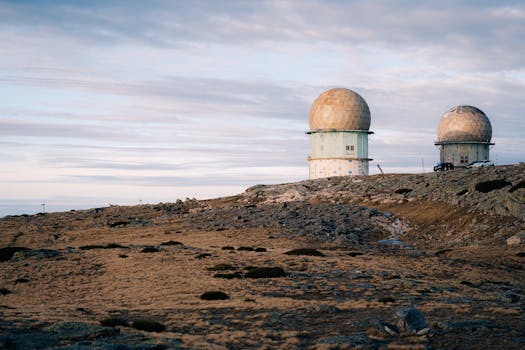
GEO satellites, or Geostationary satellites, are a type of satellite that operates in geostationary orbit, which is approximately 36,000 kilometers above the Earth’s equator. At this altitude, the satellite’s orbital period matches the Earth’s rotational period, allowing it to remain stationary relative to a specific point on the Earth’s surface. This unique characteristic makes GEO satellites ideal for providing continuous coverage of a specific region, making them a crucial component of modern satellite communication, navigation, and weather forecasting systems.
Focus Keyword: GEO satellites, and their applications are diverse and widespread. They are used for television broadcasting, telecommunications, weather forecasting, and navigation. One of the primary advantages of GEO satellites is their ability to provide continuous coverage of a specific region, making them ideal for applications that require real-time data transmission. For instance, GEO satellites are used for live television broadcasting, allowing viewers to receive real-time coverage of events from around the world. They are also used for telecommunications, providing internet connectivity to remote and underserved areas.
GEO satellites are also used for weather forecasting, providing high-resolution images of cloud patterns, storms, and other weather phenomena. This data is used to predict weather patterns, issue warnings for severe weather events, and track climate changes. Moreover, GEO satellites are used for navigation, providing location information and timing signals for GPS receivers. This has revolutionized the way we navigate, making it possible to determine our exact location and velocity anywhere on the Earth’s surface.
In addition to their practical applications, GEO satellites have also played a significant role in advancing our understanding of the Earth and the universe. They have been used for Earth observation, providing valuable data on the Earth’s climate, geology, and natural resources. They have also been used for space exploration, providing communications relay services for deep space missions and astronomical observations.
Despite their many advantages, GEO satellites also have some limitations. One of the primary challenges is the high cost of launching and maintaining a GEO satellite. The launch process is complex and requires significant resources, and the satellite must be designed to operate for an extended period, typically 10 to 15 years, without maintenance or repair. Additionally, GEO satellites are susceptible to interference from other satellites and terrestrial systems, which can impact their performance and availability.
However, advances in technology have made it possible to overcome some of these challenges. The development of more efficient launch systems, such as reusable rockets, has reduced the cost of launching a GEO satellite. Additionally, the use of advanced materials and designs has improved the reliability and lifespan of GEO satellites. Furthermore, the implementation of advanced interference mitigation techniques has minimized the impact of interference on GEO satellite performance.
In conclusion, GEO satellites play a vital role in modern satellite communication, navigation, and weather forecasting systems. Their unique characteristics, such as continuous coverage of a specific region, make them ideal for a wide range of applications. While they have some limitations, advances in technology have made it possible to overcome these challenges, ensuring that GEO satellites will continue to be an essential component of our global communication and navigation infrastructure.
The future of GEO satellites looks promising, with ongoing research and development aimed at improving their performance, efficiency, and cost-effectiveness. The use of advanced technologies, such as artificial intelligence and machine learning, is expected to enhance the capabilities of GEO satellites, enabling them to provide more accurate and reliable data. Additionally, the development of new applications, such as satellite-based internet of things (IoT) connectivity, is expected to drive growth in the GEO satellite market.
As the demand for satellite-based services continues to grow, the importance of GEO satellites will only continue to increase. They will play a critical role in supporting the development of new technologies, such as 5G networks, and enabling the widespread adoption of satellite-based services, such as satellite television and internet connectivity. In conclusion, GEO satellites are a crucial component of modern satellite communication, navigation, and weather forecasting systems, and their ongoing development and advancement will be essential for supporting the growing demand for satellite-based services.
The use of GEO satellites has also raised concerns about space debris and the environmental impact of satellite launches. As the number of satellites in orbit increases, the risk of collisions and the accumulation of space debris also grows. This has prompted the development of new regulations and guidelines for responsible satellite operations, aimed at minimizing the environmental impact of satellite launches and ensuring the long-term sustainability of space activities.
In recent years, there has been a growing trend towards the use of smaller, more efficient satellites, such as smallsats and cubesats. These satellites are designed to be more cost-effective and flexible, allowing for greater experimentation and innovation in satellite design and operation. They have also enabled the development of new applications, such as satellite-based Earth observation and remote sensing.
Another area of research and development is the use of GEO satellites for deep space exploration. They are being used as communications relay satellites, providing a vital link between Earth and deep space missions. This has enabled the transmission of large amounts of data from deep space, supporting the advancement of our understanding of the universe and the search for life beyond Earth.
The development of GEO satellites has also had a significant impact on the global economy. The satellite industry is a rapidly growing sector, with an estimated global value of over $300 billion. The use of GEO satellites has enabled the creation of new industries and job opportunities, driving economic growth and development. Additionally, the use of GEO satellites has improved the efficiency and productivity of various sectors, such as agriculture, transportation, and finance.
In the field of agriculture, GEO satellites are being used for crop monitoring and yield prediction. They provide high-resolution images of crop health, allowing farmers to optimize crop management and reduce waste. In transportation, GEO satellites are being used for navigation and logistics management, enabling the efficient movement of goods and people. In finance, GEO satellites are being used for transactions and data transmission, supporting the development of digital payment systems and online banking.
The use of GEO satellites has also had a significant impact on global health. They are being used for telemedicine, enabling remote consultations and medical interventions. They are also being used for disease surveillance and outbreak response, supporting the development of early warning systems and public health interventions.
In conclusion, GEO satellites have revolutionized the way we communicate, navigate, and understand the world around us. Their unique characteristics and capabilities have made them an essential component of modern satellite communication, navigation, and weather forecasting systems. As the demand for satellite-based services continues to grow, the importance of GEO satellites will only continue to increase, driving innovation and advancement in the satellite industry.



